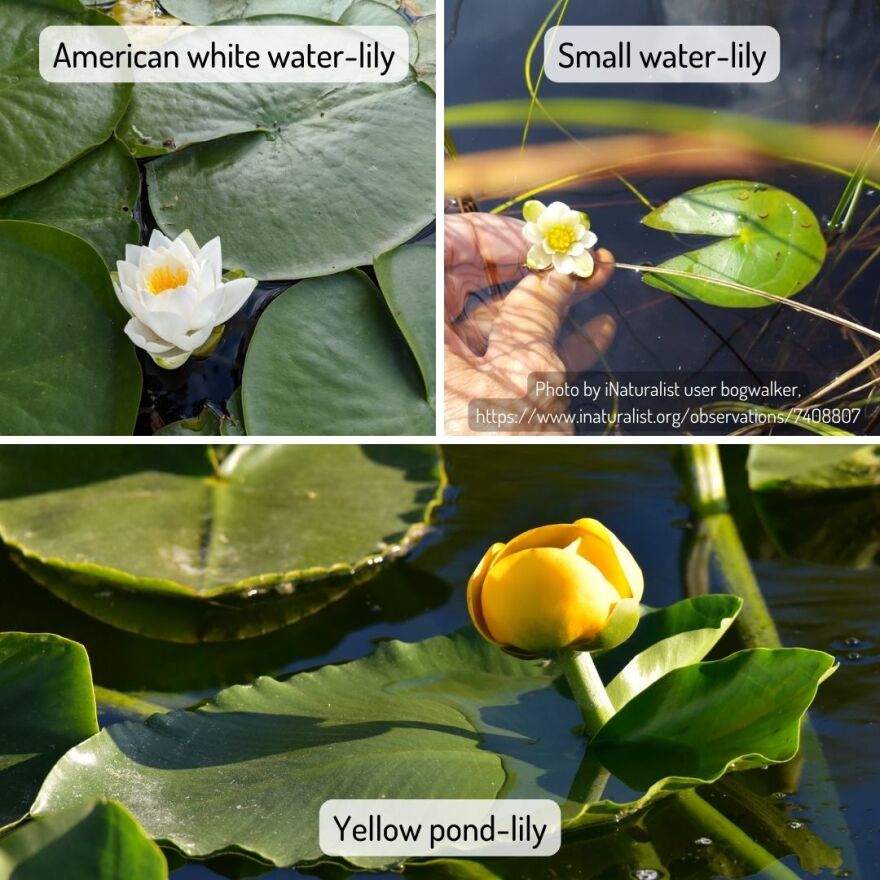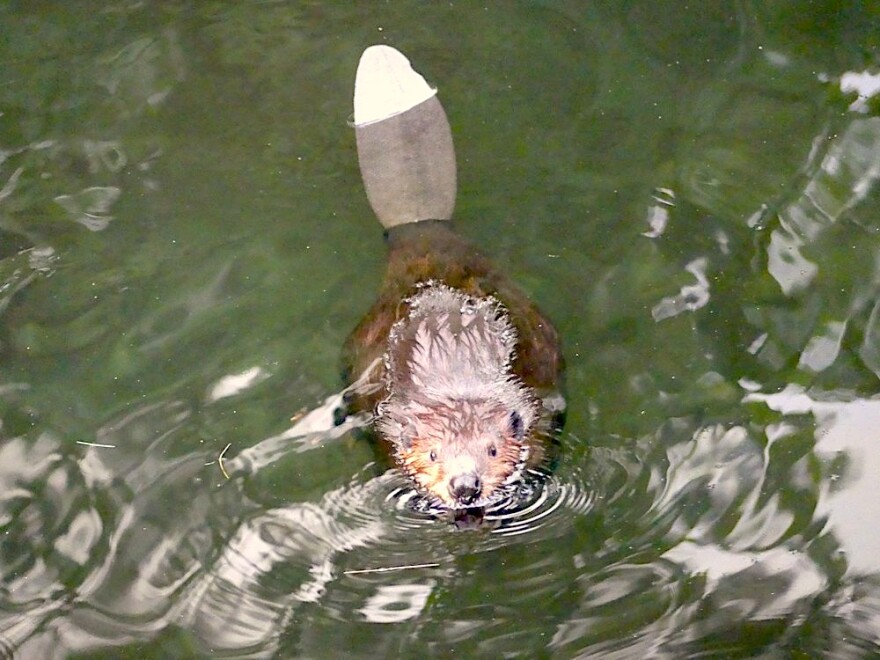This week's phenology talkbacks segment includes information about Minnesota's (lack of) venomous snakes, frogs that sound like a banjo, and water lilies. Enjoy!
Lauryn reports from summer camp at Long Lake Conservation Center! The folks there looked eagerly for the loon chick but didn't get a sighting. However, the chick is audible, so they know it's there! They also spotted three otters in the lilypads, eating frogs and tadpoles. While on the swimming raft, they caught small bluegills, yellow perch, and a bullhead; they also noticed leeches in the water! On land, there were garter snakes, frogs, horseflies, dragonflies, slugs, monarchs, deer, and hooting barred owls! They found ripe raspberries and smelled the pineapple weed. They conclude, "It was a great day in nature. Don't forget to unplug, get outside, and live connected!"
John agrees that "get outside and live connected" is excellent advice, though you may need to bring a raincoat this week. John likes these short summer rains, where it only falls for 15-20 minutes. Just enough to cool you down and get ready for more!
In terms of deer flies, John proudly boasts that he's "ahead in the game, if you count bites vs. deaths." He has more pity for garter snakes (as one should!), which are often hit on roadways. Female snakes are much larger than males, so if you see a garter snake more than two feet long, it's likely a female. It's worth mentioning that there are no venomous snakes in northern Minnesota! The snakes commonly found in the area include the garter snake and the redbelly snake, both of which are harmless. In fact, John states that the only venomous snake in Minnesota is the massasauga, which occurs in a tiny portion of the state (and even there, it is scarce).

[Gentle correction; there are arguably two venomous snakes in Minnesota. The massasauga currently has no breeding populations in the state and is classified by the DNR as an endangered species. There are breeding populations on the Wisconsin side of the Mississippi River, and massasaugas are fantastic swimmers; it's very plausible the few Minnesota sightings were of transient individuals that had swum over from Wisconsin. Comprehensive searches of massasauga habitats in 1993, 2002, and 2003 found no individuals.
In contrast, the timber rattlesnake does have a small reproducing population in the southeastern portion of the state. Due to human persecution, road mortality, and habitat loss, the population is believed to be declining, and the species is considered threatened. Running into either species of venomous snake is extremely unlikely, and bites are even rarer. There have been only 4 rattlesnake bites to humans in Minnesota in the last 34 years, and two of those were provoked! There hasn't been a fatality since the early 1900s.
I'll get off my soapbox now!]
This was my report: "Hello John and Heidi, this is Sarah with last week's phenology report. I was in the Minaki area of Ontario, Canada last week, where the Winnipeg River is 7 feet above what is typical for the season! The water and pond lilies were still struggling to reach the surface, with only 5% coverage in areas that would normally be completely covered at this time of year. The yellow pond lilies were still producing flowers (some were underwater), but I didn't see a single sign of a white water lily. The swamp smartweeds seemed to be having more success, with plenty of leaves reaching on the surface and plentiful flowers. All the open water was great for paddling around, but the wildlife that depends on those areas must really be suffering! We saw very few frogs and toads, and the small fish must be missing their nursery space. It was interesting to see a new high water line develop- the shoreline zones are all completely underwater, so there is no transition between mossy, upland forest habitat and the river.

We missed seeing our usual complement of belted kingfishers, with only a few sightings where we're used to seeing and hearing them nearly constantly. The loons failed to reproduce this year, though that might have been for the best- there sure weren't many frogs to feed their loonlets! The beavers had to rebuild their lodge on higher ground, and made themselves scarcer than usual. My wife Hayley and I had to relocate, as well! The tree where we usually hang our hammocks had its toes in the water and wasn't looking healthy, so we slept indoors for a few nights while we found a new spot. The new location is a good one- it's closer to the house, so we'll have an easier time running in when it rains, and there's a good breeze to keep the bugs away! Overlooking a highway is great when the traffic is wildlife instead of cars, and we found a perfect spot. The beavers and otters move through frequently as they go about their business.
Another change this year was that we finally convinced my dog, Drogo, to get in the canoe. He's not a fan of water or being on moving surfaces, so it was a big step for him! He was rewarded with close encounters with six loons and a family of otters. We ended up being very glad he's scared of water, as otherwise he definitely would have jumped out of the canoe! Despite his very vocal enthusiasm, the loons and otters decided to swim closer to check us out. The otters eventually headed for shore, where we watched them frolic on the bank for a little while. A wonderful wildlife experience! I hope you're having a good morning, and I'll talk to you soon. Thanks!"

John remarks on the 7-feet-above-average water level and notes that we had 8 inches of rain in May when we typically have about 4. He also notes that he's heard many green frogs (which sound like a "badly played one-string banjo." John has not found any froglets or toadlets that have metamorphosed this year, though he has seen polywogs (aka tadpoles that have grown legs or frogs that still have their tails, depending on your perspective). John suspects that the lack of young frogs is just due to them being late to emerge this year and that we'll "start seeing them bouncing around" soon! He concludes with a note on water lilies- there is only one species common in the area, the American white water lily, though the small white water lily is also present in smaller numbers. [I'll add that I thought the yellow pond-lily was a type of water lily, but it is not! The pond lilies, which have yellow flowers, have heart or oval-shaped leaves, while the water lilies have circular leaves.]

Remember that you can add your voice to this list! We would love to hear from you. Get in touch with me (smitchell@kaxe.org) or John (jlatimer@kaxe.org), or text 'phenology' to 218-326-1234.
For more phenology content, subscribe to our Season Watch newsletter!






